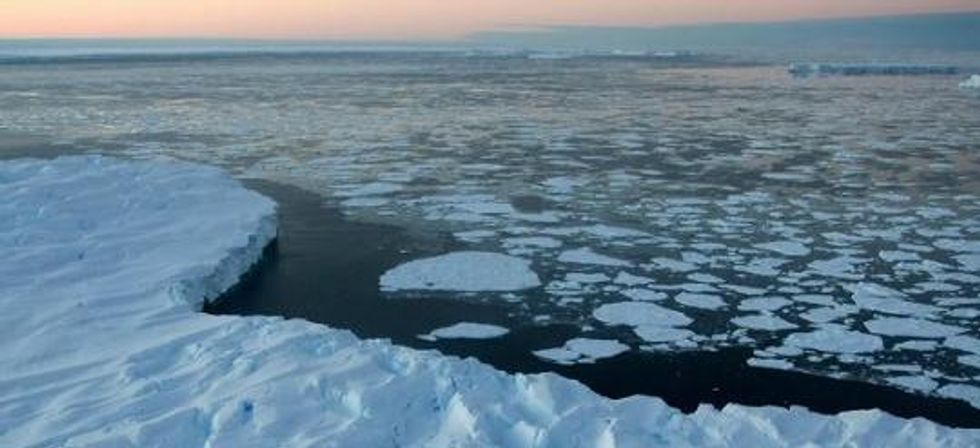An enormous and previously unknown reservoir of potent methane--a greenhouse gas 25 times more potent than carbon dioxide--could be locked beneath the Antarctic ice sheet, a
new study in the journal
Nature warns.
The scientists behind the study calculate that as much as 4 billion tons of methane gas could exist beneath the ice, and that if the alarming rate of polar melting continues and the vast reserve escapes into the atmosphere, the feedback loop of climate change already underway would accelerate dramatically.
If the scientists are correct, these southern deposits would roughly match recent estimates of the amount of methane lurking beneath the northern Arctic ice sheets.
"There's a potentially large pool of methane hydrate in part of the Earth where we haven't previously considered it," said Jemma Wadham, professor of Glaciology at the U.K.'s University of Bristol and lead author of the study, in a telephone interview with Bloomberg. "Depending on where that hydrate is, and how much there is, if the ice thins in those regions, some of that hydrate could come out with a possible feedback on climate."
As the Press Association reports, the organic material in which the methane remains trapped "dates back to a period 35 million years ago when the Antarctic was much warmer than it is today and teeming with life."
Study co-author Prof Slawek Tulaczyk, from the University of California at Santa Barbara, said: "Some of the organic material produced by this life became trapped in sediments, which then were cut off from the rest of the world when the ice sheet grew. Our modelling shows that over millions of years, microbes may have turned this old organic carbon into methane."
The gas itself is trapped in what is known as "methane hydrate" which resides in sediments beneath the seabed. As the ice above it thaws, the hydrates become unstable, and the gas begins to dissipate into the water and then escape into the air.
According to Bloomberg: "The concentration of methane in the atmosphere rose 0.28 percent to 1,808 parts per billion in 2010, the highest since records began, the UN said in November. Scientists including James Hansen have said the decline of Arctic sea ice, which this year has shrunk to the lowest extent on record, may be a harbinger of greater changes, including the release of methane compounds from the permafrost -- or frozen soils."
The scientists behind this study conceded their findings were not definitive, but argued that neglecting the possibility of methane reserves in the Antartic was a dangerous option.
"Our study highlights the need for continued scientific exploration of remote sub-ice environments in Antarctica, because they may have far greater impact on Earth's climate system than we have appreciated in the past," Tulaczyk said.
# # #



